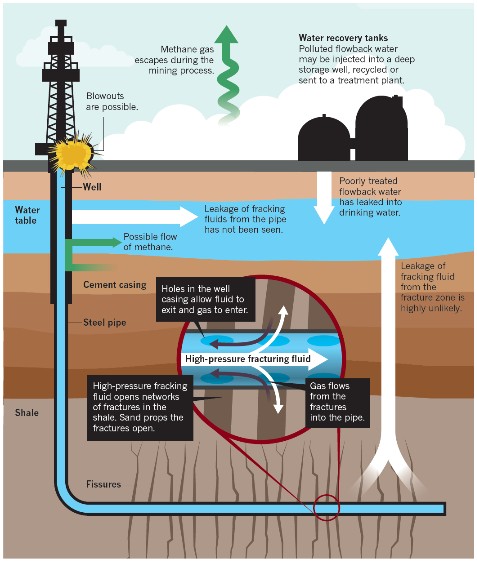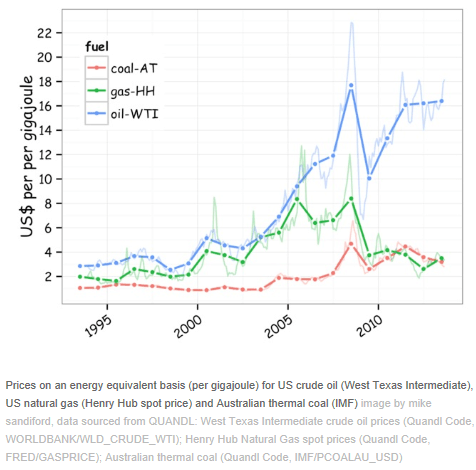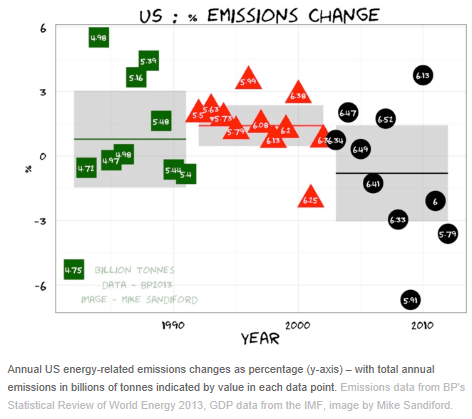
Cross-posted from The Conversation
With the hype surrounding the US gas-boom, it’s something of a worrying and cautionary note to read in the Financial Times outgoing Shell CEO Peter Voser quoted as saying his “huge bet on US shale was a big regret of his time as chief executive of the company”.
With a purported $24 billion invested in so-called unconventional oil and gas in North America, the FT reports Shell has recently taken a “$2.1 billion impairment against its assets” with Voser quoted as saying “Unconventionals did not exactly play out as planned”.
This is something of a mea culpa for the fossil fuel heavyweight. Just over 12 months ago Voser was championing the “natural gas revolution” as the most significant energy development in decades, citing the dramatic impact of new reserves of tight gas, shale gas and coal seam gas in the United States.
It may well prove to be, but Voser’s comments suggest some cracks are appearing in the bridge to the new energy future promised by the gas boom.

Part of the problem appears to be that Shell entered the American shale-gas game late, around 2010, paying over the top just when the supply boom was pushing prices to historic lows.
As shown in the figure above, the GFC affected all fossil-fuel prices. But while crude oil has managed to climb back to pre-GFC highs, US gas prices have remained low. The average gas price since Shell bought in has been about half the pre-GFC price.

In the US, the unconventional gas boom has seen a profound decoupling of gas and oil prices. So much so that in recent times US gas prices have been pretty much tied to the international coal price (as indicated for example by Australian thermal coal price).
To put this in context, prior to the GFC, US gas prices danced in tune with oil, with a ratio of about 1.4 (oil to gas) on an energy equivalent basis.
As such, US gas prices have always been higher than coal (on an energy equivalent basis), but the separation has grown markedly over the last few decades. Back in the 90’s US gas prices were typically about twice international coal. By the mid 00’s that had blown out to a factor of four.
It started to change in 2008, and by 2011 US gas prices were lower than international thermal coal prices on an energy equivalent basis, and some five times lower than crude oil.
With little capacity to export, the US gas market has been effectively insulated from international pricing. And so in face of huge new unconventional gas supply, prices have plummeted – down from an average of over US$8 per gigajoule in 2008 to under US$3 in 2011.
Not surprisingly,this vast flow of cheap new gas has had a profound effect on the US energy sector. With a significant latent capacity in existing gas-fired electrical power plants, the switch to gas has been both fast and dramatic, with potentially far-reaching ramifications.
As shown below, the unconventional gas boom has helped push US energy related greenhouse gas emissions into negative territory for four out of the last five years. Given its status as a major global emitter, that is a significant achievement. The near 4% fall in GHG emissions in 2012 is the largest recorded by the US for a non-recession year.

Four percent is the average annual emissions reduction target needed to achieve an 80% reduction by around 2050. Such figures should be cause for celebration for those of us worried about the future costs of human-induced climate change.
In this context, Voser’s comments are particularly concerning. They suggest not all is as it seems.
To further compound this, the US Energy Information Administration (EIA) reports a dramatic switch back to coal in the electrical power sector is already underway. US coal consumption for the first half of 2013 is up a staggering 8.7% on the first half of 2012 on the back of higher electricity demand and higher natural gas prices. The EIA is predicting a 2% rise in US emissions in 2013.
So much for the climate …
Shell’s problem may have been largely due to having bought in to an overhyped market too late. But Voser also highlighted other problems. The FT reports Shell’s exploration results in US shale gas had been disappointing, with Voser quoted as saying “We expected higher flow rates and therefore more scalability for a company like Shell”. The question is whether unconventional gas production will continue to be viable at the current, coal-equivalent prices. And if it’s not? Well in the US at least it looks like they will just fire up the old, mothballed coal-fired plants.
There is no doubt gas is a much cleaner fuel than coal in all sorts of ways, and a preferable one if it can be delivered to market at scale in a cost effective way. It could conceivably help attain climate objectives if used as a bridging fuel, providing fugitive emissions are held in check. But to do so, requires a sustained coal-to-gas replacement path in the short-medium term.
With the latest reports out of EIA, and Shell’s mea culpa, unconventional gas is not looking quite the sure bridge it was just a few months ago.
Article by Mike Sandiford, Director, Melbourne Energy Institute at University of Melbourne

